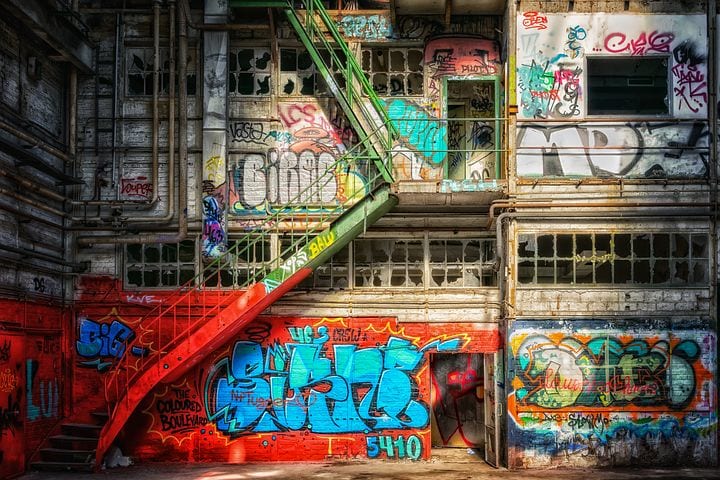I’m hiking up the steps that separate the dichotomy of Montmartre and the Basilica of Sacre Coeur in Paris. Sure, the latter is breathtaking. But, looking closely, you may notice the reality of the place: it is centuries old. I look around the old buildings and residential apartments where, interestingly, many prominent 20th century artists lived. Then, something catches my eye and my attention is directed toward a run-down building with an odd-looking figure that does not blend with its environment. It’s a spray-painted image of a little girl running across the building’s roof, and I realize it’s graffiti. This graffiti then becomes a topic of discussion for my family and the tourists around us who disapprove. My heart lightens at the power graffiti possesses in creating an atmosphere that publicly admires the anonymous artist’s work.
If you’ve ever stepped foot into the outside world, you’ve probably noticed various spray paint forms that are on concrete walls in bustling cities or even in the playgrounds of your local community that are, at times, indecipherable. Graffiti is prevalent, and sometimes, inevitable.
There have been numerous graffiti crackdowns over the years and police in big cities have issued fines of more than $250 for such “crimes.” Some say that this type of vandalism destroys the urban landscape and others believe it deteriorates public property. But, could graffiti be used for the public good?
Graffiti, for the most part, allows those with artistic motivation to create unimaginable possibilities that inform the public through timeless works of art. Instead of creating art for galleries, they showcase their work to any person that walks through a street. Also, graffiti grants these artists the ability to alter the grim setting cities or suburbs may have. Banksy certainly proves to be the epitome of this aspect. As an anonymous figure, he travels around the world to create intricate displays of art in murals and walls that always provide social messages through simple tools: stencils and spray paint. Whether it is on the technological revolution/doom or “Black Lives Matter” movement, his graffiti vividly illustrates these issues in satirical, and often times poignant, ways. Recently, he went all the way to the West Bank to contribute to the graffiti on the wall that separates Israel and Palestine, painting a dove wearing a military jacket with a target, and a rat holding a slingshot. Although controversial, these pieces of art speak on issues that, for many, can be too taboo to mention openly. He has revolutionized the true meaning and purpose of graffiti.
It is true that graffiti can be used as a mode to deface architecture or buildings in cities. However, there are numerous instances where graffiti artists have gone to the streets to beautify slums in urban communities and areas that seemed inconceivable for the public eye. These artists have inspired run-down areas in parts of major cities to be dedicated to graffiti artists. Wynwood Walls in Miami, for example, has created a venue for these artists to express themselves and hone their graffiti skills.
To onlookers or tourists, graffiti can have the ability to lighten the mood of those who had a bad day at work or just can’t see the glass half full. To teenagers, it has given them the possibility to actively engage in social issues and promote social change. They have also been given a platform to be recognized, heard or understood.
As graffiti art grows over the years, so will people’s acceptance for it as a true art form. All around the world, people are constantly expressing themselves through various mediums that serve as a voice. Whether through social media posts, face-to-face interaction, or simply in art, there’s always room for a diversity of opinions to be heard. Why should graffiti be any different from these mediums?


